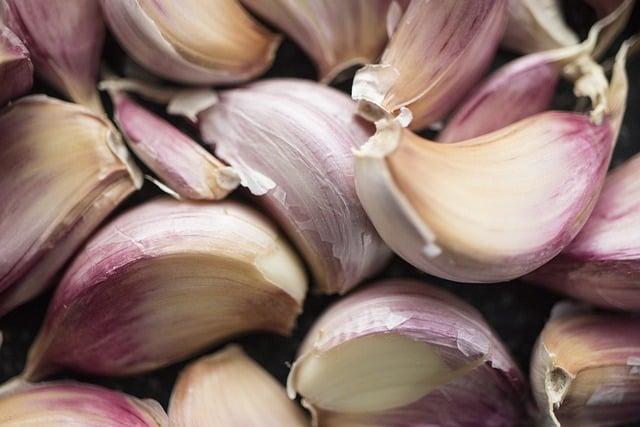In the ever-evolving world of culinary arts, the quest for healthier eating often feels like a tightrope walk between flavor and nutrition. As we strive to nourish our bodies without compromising on taste, the allure of rich, indulgent dishes can seem at odds with the desire to reduce fat intake. But what if you could have the best of both worlds? Imagine savoring meals that delight your palate while being kinder to your waistline. Welcome to the realm of simple cooking hacks that allow you to enjoy delicious, satisfying dishes with less fat. In this article, we explore innovative techniques and clever substitutions that maintain the essence of your favorite flavors, proving that healthy eating doesn’t have to be bland or boring. Whether you’re a seasoned chef or a kitchen novice, these tips will inspire you to create culinary masterpieces that are as wholesome as they are delectable.
Healthy Ingredient Swaps for Flavorful Dishes
Transform your culinary creations by incorporating healthier alternatives without losing the essence of taste. By swapping out traditional ingredients with more nutritious options, you can enjoy flavorful dishes while reducing fat content. Here are some creative ingredient swaps to get you started:
- Avocado for Butter: Replace butter with mashed avocado in your baking recipes. This swap not only cuts down on saturated fats but also infuses your treats with a creamy texture and a hint of nutty flavor.
- Greek Yogurt for Sour Cream: Use Greek yogurt as a tangy and protein-rich substitute for sour cream in dips, dressings, and toppings. Its creamy consistency makes it a versatile swap without compromising on taste.
- Olive Oil for Vegetable Oil: Opt for olive oil instead of vegetable oil for sautéing or roasting. Rich in healthy monounsaturated fats, olive oil enhances your dishes with a subtle, fruity aroma.
- Coconut Milk for Heavy Cream: For a dairy-free alternative, coconut milk provides a luscious, creamy texture perfect for soups and curries, imparting a delicate coconut flavor that enriches the dish.
- Pureed Fruits for Sugar: Sweeten your baked goods naturally with pureed fruits like applesauce or banana. This not only reduces refined sugar intake but also adds moisture and depth to your recipes.

Mastering Cooking Techniques to Reduce Fat
Unlocking the secret to delicious, low-fat cooking often lies in the mastery of techniques that enhance flavors without relying on excessive oil or butter. Steaming: Perfect Techniques”>Roasting and grilling are exceptional methods that bring out the natural sweetness and depth of vegetables and meats. By using high temperatures, these techniques caramelize the surface, adding a rich flavor that eliminates the need for heavy sauces or fats. Another brilliant method is steaming, which preserves nutrients while keeping dishes light and fresh. Infuse steamed dishes with herbs and spices to elevate their taste profile.
- Use non-stick cookware: This reduces the amount of oil needed for cooking.
- Opt for cooking sprays: A light mist can evenly coat your pan without adding extra calories.
- Embrace the power of broths: Substitute oils with vegetable or chicken broth for sautéing vegetables.
- Experiment with marinades: Use vinegar, citrus, and herbs to tenderize and flavor meats without added fat.

Enhancing Taste with Herbs and Spices
Unlock the culinary magic of herbs and spices to transform your dishes into vibrant, flavorful masterpieces without the extra fat. These natural flavor enhancers not only add complexity but also a burst of color and aroma to your meals. Embrace the art of seasoning with these simple yet effective strategies:
- Layering Flavors: Start by using fresh herbs like basil, cilantro, or parsley as a finishing touch to brighten up any dish. Add dried herbs during the cooking process to infuse their flavors into the food.
- Spice Blends: Experiment with spice blends such as garam masala, za’atar, or herbes de Provence to introduce new dimensions of taste. These blends are pre-mixed, offering a balanced mix of flavors with minimal effort.
- Infusion: Infuse oils or vinegars with your favorite herbs and spices. This technique allows you to add subtle flavor notes to salads, marinades, or drizzles without adding extra fat.
By strategically incorporating these elements into your cooking, you can create dishes that are both healthful and satisfying, proving that reducing fat doesn’t mean reducing flavor.
 Broths and Stocks for Richness”>
Broths and Stocks for Richness”>
Creative Uses of Broths and Stocks for Richness
Broths and stocks are the unsung heroes in the culinary world, capable of transforming ordinary dishes into extraordinary experiences without the added fat. These liquid golds can be used to sauté vegetables, providing a flavorful base that infuses every bite with depth and complexity. Instead of using oil, try simmering your veggies in a rich vegetable or chicken broth to add a layer of taste that oil simply can’t offer.
- Rice and Grains: Replace water with broth or stock when cooking rice, quinoa, or other grains. This simple swap will infuse them with a savory taste that pairs well with any dish.
- Soups and Stews: Enhance your soups and stews by using a well-made broth as the base. The natural flavors will shine through, creating a comforting and hearty meal.
- Marinades and Sauces: Use broth as a base for marinades or sauces. It not only adds flavor but also tenderizes meat without the need for additional fats.
Broths and stocks can also be reduced to create a flavorful glaze or sauce, perfect for drizzling over roasted vegetables or grilled meats. The natural collagen and nutrients present in stocks add a luxurious mouthfeel, making your dishes taste indulgent without the need for cream or butter.
The Conclusion
As we conclude our exploration into the art of cooking with less fat, it’s clear that a flavorful culinary experience doesn’t have to be laden with excess. By embracing these simple hacks, you’re not just cutting down on fat, but opening the door to a world of vibrant tastes and creative possibilities. Whether you’re roasting with herbs, grilling with zest, or baking with a twist, these strategies allow you to savor the richness of each ingredient without compromise. So, the next time you step into your kitchen, let these insights inspire you to craft meals that are as nourishing as they are delicious. Here’s to a healthier plate and a satisfied palate!
